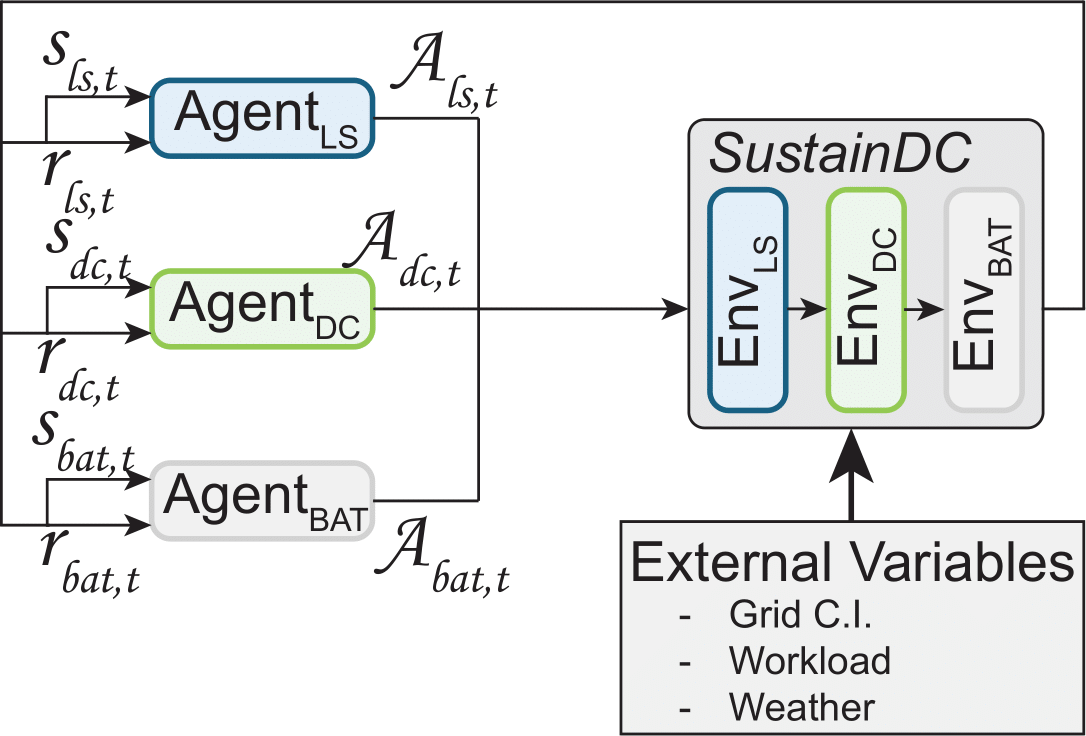Inter-connected Environments¶
These three environments are interconnected to simulate realistic DC operations:
The Workload Environment generates the computational demand that the Data Center Environment must process. This includes managing the scheduling of delayable tasks to optimize energy consumption and reduce the carbon footprint.
The Data Center Environment handles the cooling and IT operations required to process the workloads. Higher computational demand results in increased heat generation, necessitating more cooling and energy consumption.
The Battery Environment supports the DC by providing auxiliary energy during periods of high carbon intensity, helping to reduce the overall carbon footprint. It is affected by both the Workload Environment and the Data Center Environment. The workload impacts heat generation, which in turn affects the cooling requirements and energy consumption, influencing the battery’s charging and discharging cycles.
Together, these interconnected environments provide a dynamic platform for benchmarking MARL algorithms, helping to develop strategies for more sustainable and efficient DC operations. A schematic of their connection is given in the figure below.
